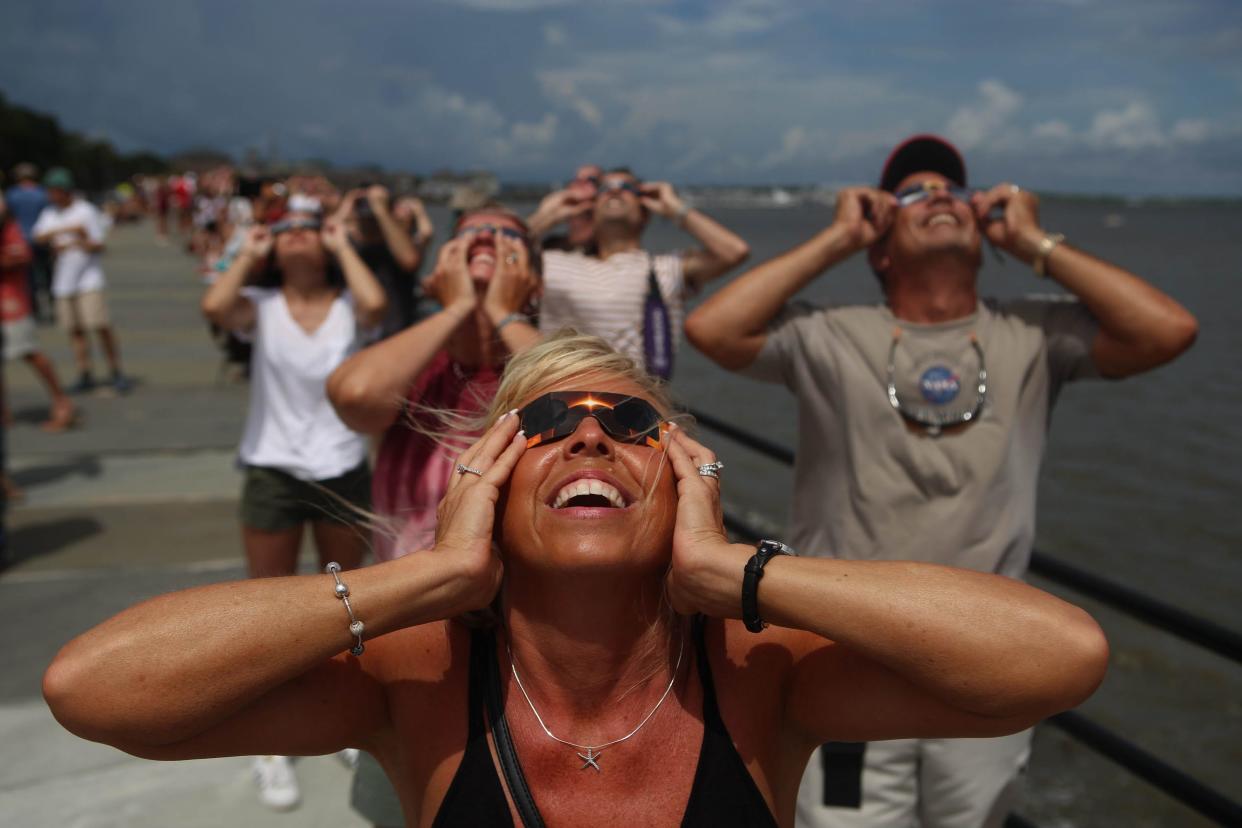Why total eclipses are slowly going extinct

It’s not only our animal species that are declining toward extinction — our total eclipses are also inching closer and closer to extinction. This slow march toward eclipse extinction is due to human activity on the Earth. Carbon emissions and a bulging atmosphere are slowly pushing the moon further and further out to space, which will have incredible consequences to our Earth.
For those that got past the first paragraph, of course much of that first paragraph is a joke. While our carbon emissions do absolutely nothing positive for the life on Earth, they are not pushing the moon anywhere. However, total solar eclipses are really going extinct. Take advantage of them now, because the time is ticking on how long you will be able to watch them.
The moon is much smaller (about 400 times smaller) than the sun. However, the moon is 400 times closer to the sun. For this reason, the moon can completely block out the sun if it is lined up just right.
The moon used to be incredibly close to the Earth. When the moon first formed (when a small planet slammed into Earth when Earth was only 50 million years old), the moon was only 15,000 miles away. So why is the moon now 239,000 miles away?
Every year, the moon drifts 3.82 centimeters away from the Earth. But it is not the moon’s fault — it’s the Earth’s fault. The tides on Earth are a powerful force. The force of the moving tides is actually causing the Earth to lag its rotation ever so slowly. But remember, the tides are caused by the moon’s gravity so, in the end, it is the moon’s fault!
Motion is always in balance so, when our motion slows, the moon compensates by moving slightly farther away. This movement is explained by a process called the Law of Conservation of Angular Momentum. The slow drift of the moon means every 40,000 years, the moon drifts another mile away.
When the moon formed, the Earth day was only five hours long. Dinosaurs enjoyed a day that was about 23 hours long. In millions of years, whatever life is on Earth will enjoy a day that is 25 hours long. The Earth’s day will very slowly get longer and longer and longer as the moon drifts farther and farther away.
The slowing down of the Earth’s spin is why we have to add a leap second to our clocks every 18 months. Every year, it takes an extra 14 microseconds for the Earth to complete a full rotation.
For this same reason, if leap years annoy you — if you can hold out another 4 million years, we won’t even need them. At that point, one full rotation around the sun will last exactly 365 days.
Back to eclipse extinction
Imagine how giant the moon would have been in our sky when it was just 15,000 miles away! Now the moon is much smaller in the sky and as it slowly drifts away, the moon will appear smaller and smaller.
Even today, the moon does not always appear the same size in the sky. Because the moon’s orbit around us is slightly oval-like (as opposed to a perfect circle), there are times when the moon is closer and times when the moon is farther.
This explains why, even if everything lines up right, only 50% of eclipses are total. Sometimes everything will line up but the moon is just a little too far away, so it doesn’t completely cover the entire sun. This is called an annular eclipse.
Therefore, as the moon drifts slowly away from Earth, more and more of our eclipses will be annular rather than total. So go out and enjoy total eclipses while you can because their days are numbered.
Mike Szydlowski is a science teacher and zoo facilitator at Jefferson STEAM School.
TIME FOR A POP QUIZ
Why do we not always have total solar eclipses even when the Earth, moon, and sun are perfectly lined up?
Why is the moon slowly moving away from the Earth?
Why will the moon's slow movement away mean fewer total solar eclipses over time?
How many miles away will the moon be 120,000 years from now?
LAST WEEK'S QUIZ ANSWERS
What causes a solar eclipse?
A solar eclipse occurs when the moon passes directly between the Earth and the sun, blocking the sunlight and casting a shadow over parts of the Earth.
How did the Assyrians view astronomical events like solar eclipses?
The Assyrians viewed astronomical events as messages from their gods.
Why was the 763 BCE solar eclipse significant to the Assyrians?
The solar eclipse of 763 BCE was significant to the Assyrians because they thought it was a warning from their gods.
What were some of the challenges faced by the Assyrian Empire following the eclipse?
Following the eclipse, the Assyrian Empire contended with internal conflicts, public dissatisfaction due to heavy taxation and forced labor, financial difficulties, and threats from neighboring states and nomadic tribes.
How do modern interpretations of eclipses differ from those of ancient civilizations like the Assyrians?
Today, eclipses are understood as natural celestial events, explained by the movements of the Earth, moon, and sun. Unlike ancient civilizations that might have viewed them as ominous signs.
This article originally appeared on Columbia Daily Tribune: Why total eclipses are slowly going extinct

